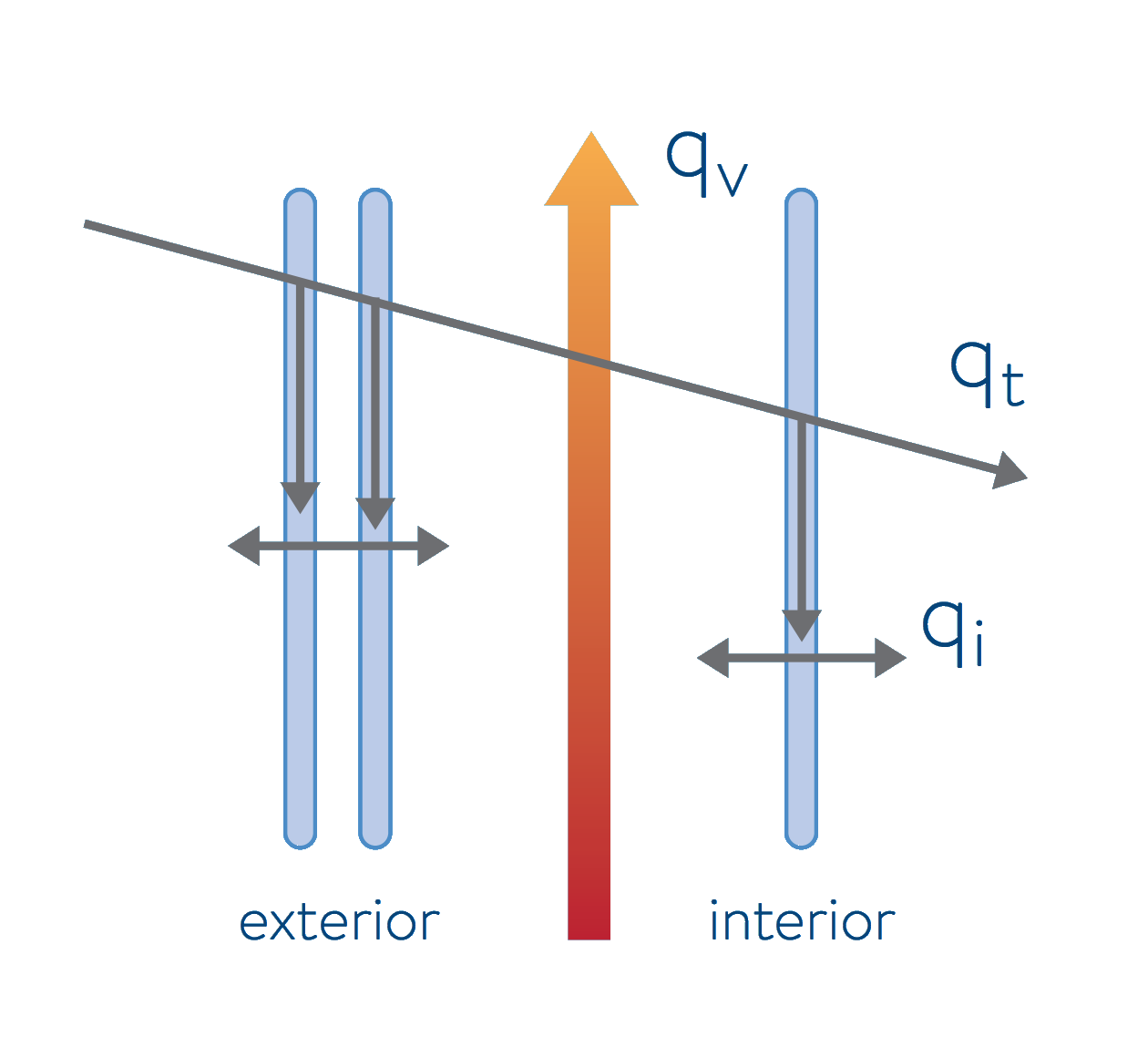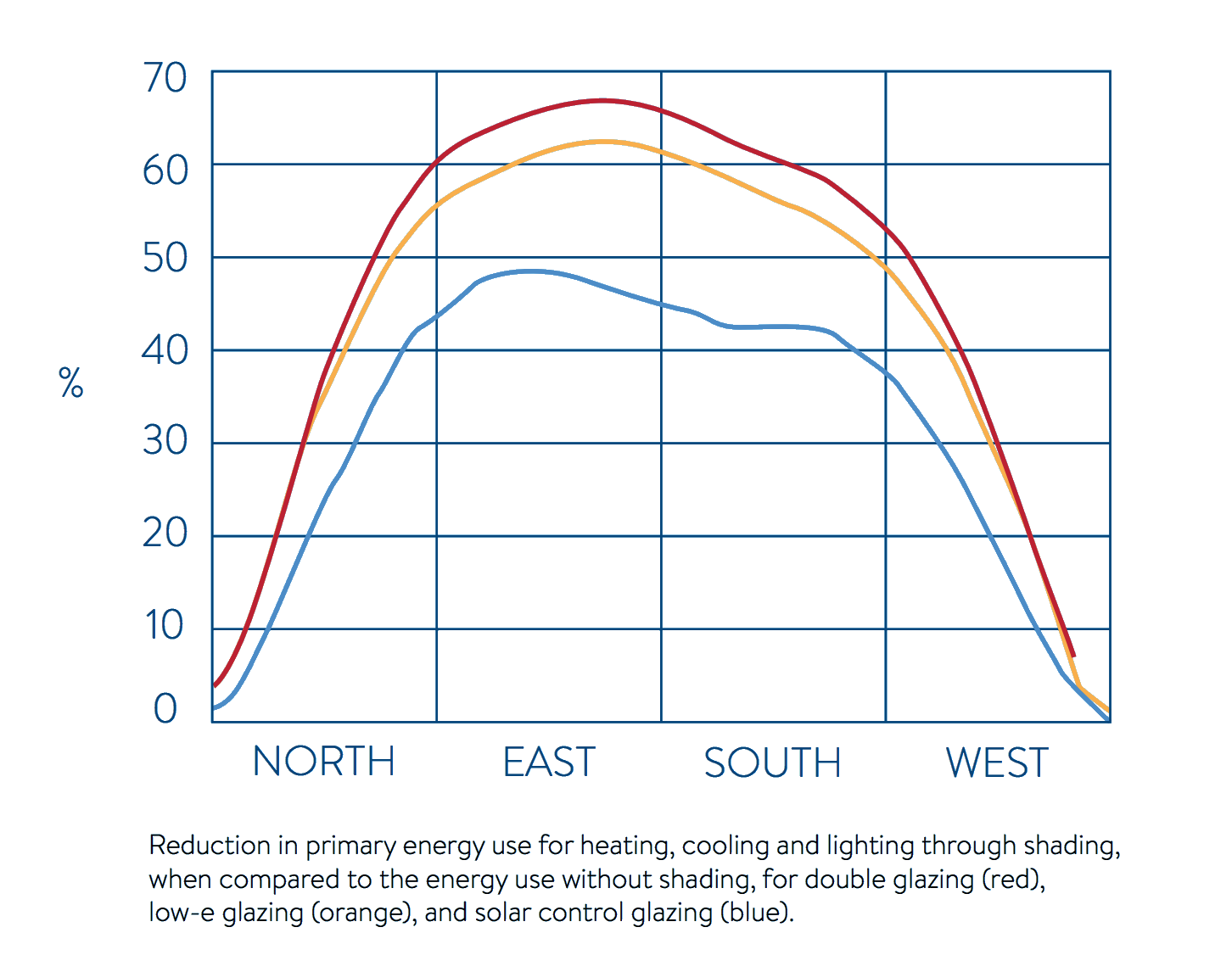Solar Energy Control
The interaction of light with a glass surface is a complex area of study, and one we’re constantly examining. Advanced building physics modelling systems can simulate the effect of solar radiation and energy flows on internal environments, examining variables such as solar angle (dependent on geographic location and time of year), glazing type, shading system, and the aspect and construction of a specific building.
Thermal Gain

The g-value, or total solar energy transmittance, is the percentage of solar energy that reaches the interior of a building. It is calculated from a number of factors, including direct transmittance, reflectance, and absorptance.
External fabric shading can achieve a g-value as low as 0.02 for all types of glazing. This means that fabric shading can deliver the required environmental benefits while also reducing the overall project cost, as savings can be made on the glazing specification.
Energy Savings & CO2 emissions

Dynamic fabric shading can mean significant energy savings because it removes the need for artificial cooling, lighting and heating. For south facing facades this reduction can even be as much as 65%.
The biggest single area of savings is air conditioning, where external blinds can help achieve energy savings of over 70%. (Source: ESSO). Savings are also significant for lighting costs, especially where building management systems synchronize shading and lighting use.
Whereas louvers, film or ‘solar control’ glazing cast a permanent shadow, automated fabric shades offer more versatile control and allow you to enjoy natural light, even in duller conditions. Finally, the use of highly insulating fabrics can even reduce heating costs in colder weather, especially when closed overnight.
If environmental credentials are important to the design brief, be assured that fabric shading will make a real difference. The appropriate automated fabric shade will deliver energy savings of up to 60 times its CO2 footprint over a 20 year lifespan. Approximately 86% of relevant emissions come from the extraction of raw materials and the production of primary products. Only 0.5% is created during manufacturing. This makes fabric shading a popular choice for any designer thinking about environmental impact.
We always aim to collaborate with architects and technical consultants as early as possible in the design process, to create a bespoke shading system that meets any project requirements, whether they be to achieve the correct balance of heat reflection, glare reduction, views to the outside, durability, safety, aesthetics, or a low carbon footprint. Contact our specifications team to discuss your project >>






